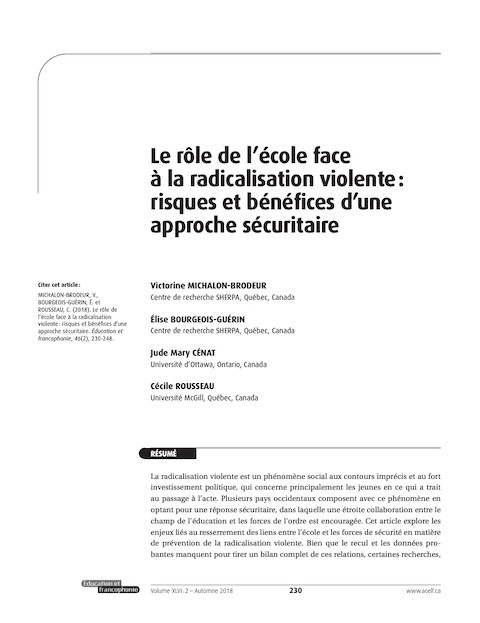
GCED Basic Search Form
Quick Search
You are here
Resources

Violent radicalization is a social phenomenon with vague contours and strong political investment. Those mainly at risk of becoming involved are young people. Several Western countries are dealing with this phenomenon by opting for a security response, encouraging close collaboration between education and law enforcement. This article explores issues related to strengthening connections between the school and law enforcement for the prevention of violent radicalization. While there is a lack of evidence that would be needed to paint a full picture of these relationships, some studies on the impact of the War on Terror on young people and securing American schools in response to school shootings call for restraint. In light of these studies, this article argues that clear boundaries must be established between the mandates of the school and the police. The importance of these firewalls must be emphasized in the training school personnel in the prevention of violent radicalization in order to preserve the school’s ability to be a place that promotes the development of critical thinking and awareness of the Other.
